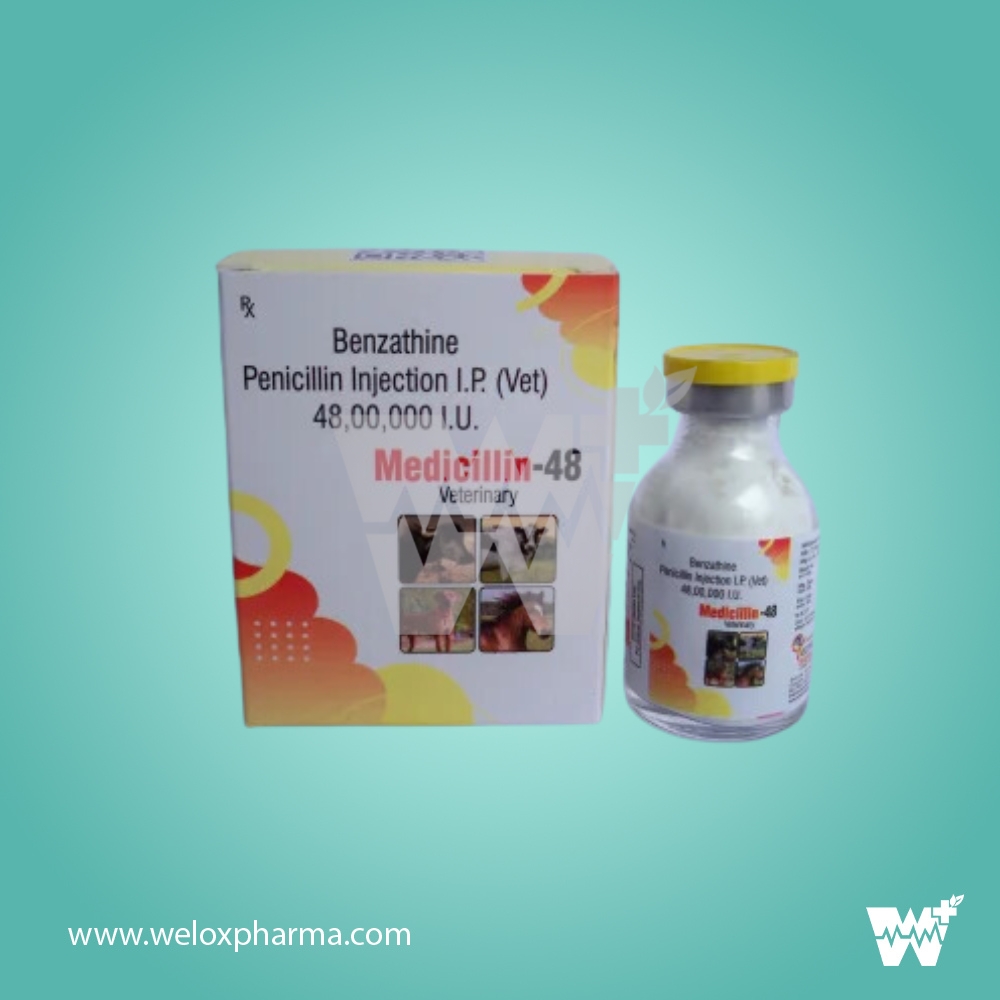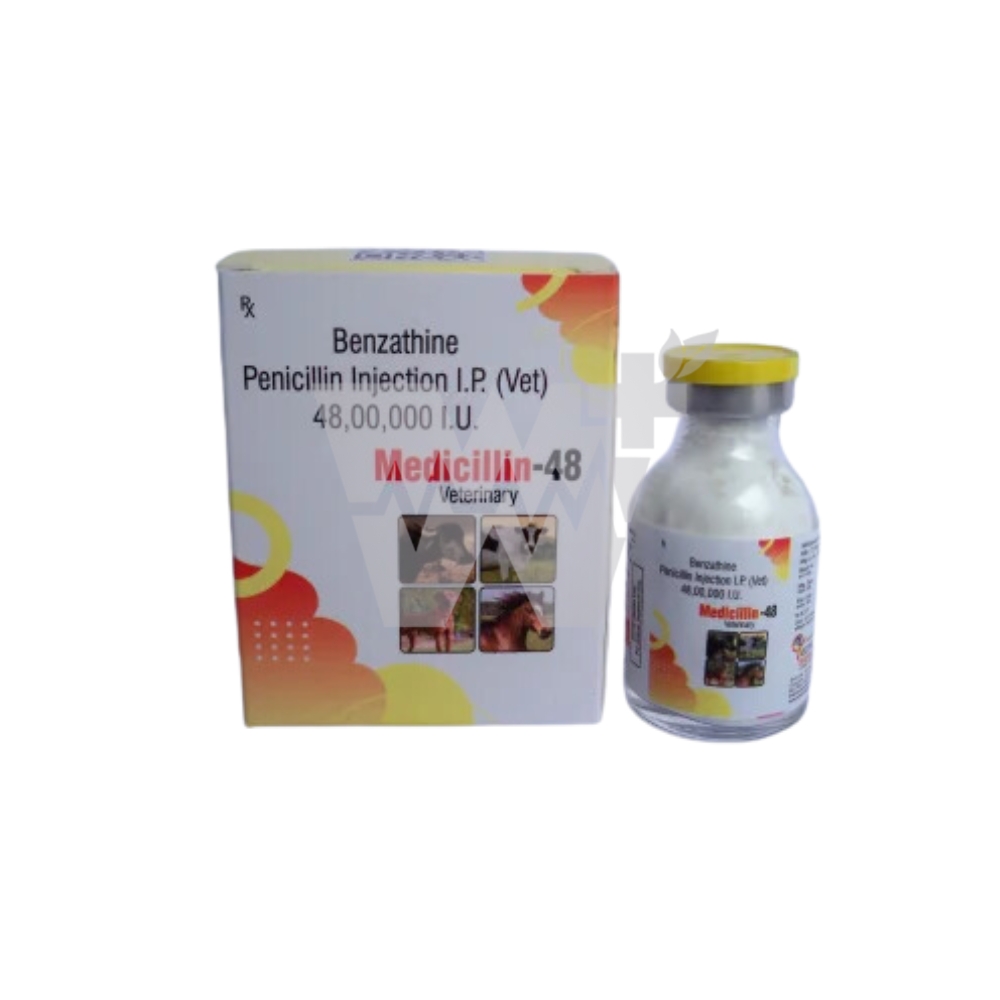



Introduction to Medicillin 48 Benzathine Penicillin Injection
Medicillin 48, offered by Lexaro Healthcare, contains Benzathine Penicillin, a form of penicillin designed to release slowly into the bloodstream over an extended period. This injection is utilized for its prolonged antibacterial activity, providing effective treatment for bacterial infections with a single dose.
Uses of Medicillin 48 Benzathine Penicillin Injection
Medicillin 48 is primarily prescribed for:
Treating streptococcal infections, including rheumatic fever and acute pharyngitis.
Prophylactic treatment to prevent rheumatic fever in patients with a history of rheumatic heart disease.
Managing syphilis and other infections caused by penicillin-sensitive organisms.
Providing long-term prophylaxis against infections in patients with specific medical conditions.
Benefits of Medicillin 48 Benzathine Penicillin Injection
Offers prolonged antibacterial activity due to its slow-release formulation.
Effective in treating and preventing various bacterial infections with a single dose.
Provides a convenient and effective option for chronic infection management and prophylaxis.
Well-tolerated with a favorable safety profile when used according to prescribed guidelines.
Reduces the frequency of dosing compared to other antibiotics, improving patient compliance.
Mechanism of Action of Medicillin 48 Benzathine Penicillin Injection
Benzathine Penicillin, the active ingredient in Medicillin 48, functions by inhibiting bacterial cell wall synthesis. It binds to specific penicillin-binding proteins (PBPs) on the bacterial cell membrane, disrupting the cross-linking of peptidoglycan layers in the cell wall. This disruption leads to cell lysis and death, effectively eliminating susceptible bacteria.